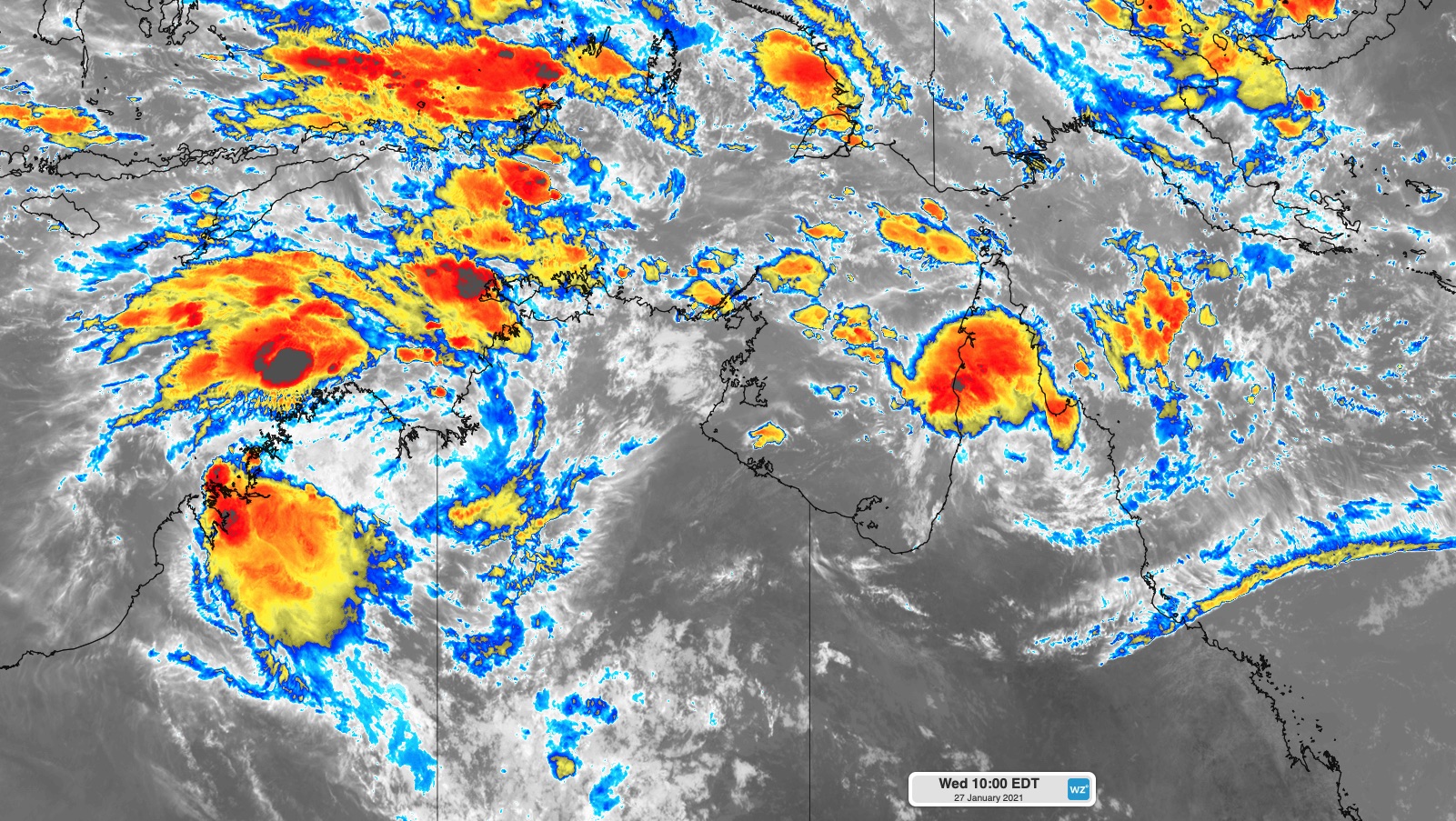Twin tropical lows soaking northern Australia
A couple of tropical low pressure systems are causing heavy rain in northern Australia and both have potential to become tropical cyclones later this week.
On Wednesday morning, the two lows were located over the eastern Gulf of Carpentaria and near the southwestern Top End in the NT.

Image: Enhanced infrared satellite image showing large storm clouds building around two tropical lows over northern Australia on Wednesday morning.
The low over the Gulf was initially being monitored by the Bureau of Meteorology on Wednesday morning, because it had potential to develop into a tropical cyclone. However, the system defied the official forecast track and moved over Queensland's Cape York Peninsula on Wednesday as a tropical low pressure system, below cyclone strength.
This low will now cause heavy rain and flooding as it spins over the Cape York Peninsula during the next two to three days. Most models suggest that it will then move out over the Coral Sea on the weekend, where it could become a tropical cyclone. It's worth keeping a close eye on this system if you live in tropical Queensland.
The other active tropical low near Australia was located near the northern end of the WA/NT border on Wednesday morning. This low is over land and therefore poses no risk of becoming a tropical cyclone in the immediate future.
As a tropical low, this system will cause heavy rain over parts of the western Top End today and then across the Kimberley from today until at least Friday. As the system moves slowly towards the west, heavy rain could also spread into WA's Pilbara region later in the week.
This slow-moving low pressure system could cause several hundred millimetres of rain in the Kimberley during the next few days, which is likely to bring flooding. Some models also suggest that it could move off the north coast of WA later in the week, which would give it a chance of strengthening into a tropical cyclone.
With two active lows in the tropics and quite a lot of forecast model uncertainty, anyone living in northern Australia should closely monitor the latest forecasts and warnings during the coming week.